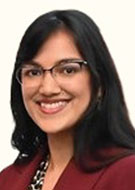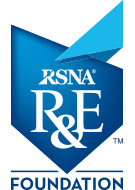Your Donations in Action: Alankrit Shatadal
Clarifying the Language of Head CT


Radiology reports link imaging findings to clinical decisions, and the language used can greatly influence interpretation and care.
Non-contrast CT, a common first-line neuroimaging tool, often reveals intracranial calcifications that range from benign to serious. Determining their cause is challenging without further imaging, making the descriptive language in initial reports crucial for guiding timely diagnosis and patient management.
For her 2023 RSNA Research Medical Student Grant project, "A Picture is Worth a Thousand Words: Correlating Description of Calcifications on Non-Contrast Head CT with Final Diagnosis," Alankrit Shatadal, a fourth-year medical student at the University of Wisconsin-Madison School of Medicine and Public Health, and her faculty mentor analyzed verbiage used to describe calcified lesions on head CT to determine correlations with final pathology.
“Our results of this retrospective analysis indicated that among all non-pediatric patients, all four types of descriptor words, categorized by shape, size, quantity and distribution, were significant for their associations with particular etiologies,” Shatadal said.
The study found that specific descriptive terms in neuroradiology reports carry diagnostic weight and could help shorten time to diagnosis and reduce patient morbidity. For example, when distinguishing vascular lesions from tumors, differences in terms describing size and shape were statistically significant.
“These results are promising because they show progress towards standardized language which can be acted upon by referring physicians. However, further collaboration between the radiologist and the referring physician is necessary to bridge the gaps that remain,” Shatadal said. She and her mentor are now exploring methods of enhancing communication practices, starting at the trainee level.
The R&E Foundation grant helped Shatadal at an early stage in her radiology journey.
“To receive support from an international society as a first-year medical student was an incredibly humbling moment in my education,” she said. “Working on this project brought me to the RSNA annual meeting for the first time and connected me with amazing people engaged in similar work, further cultivating my interest in both research and radiology.”
For More Information
Learn more about R&E Foundation funding opportunities.
Read our previous Your Donations in Action story.